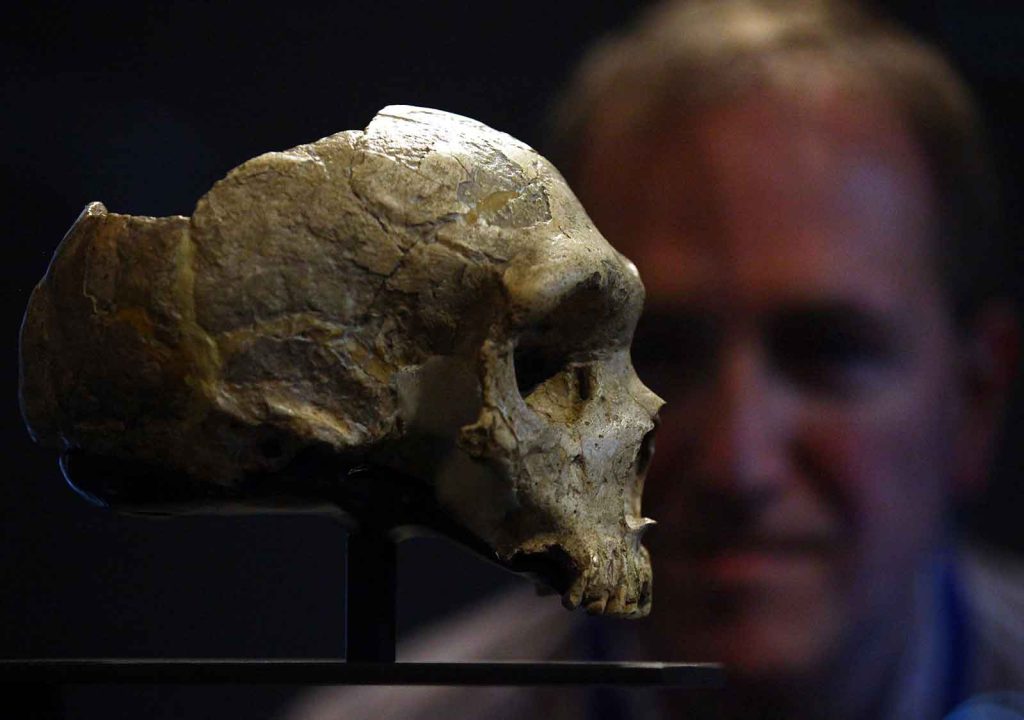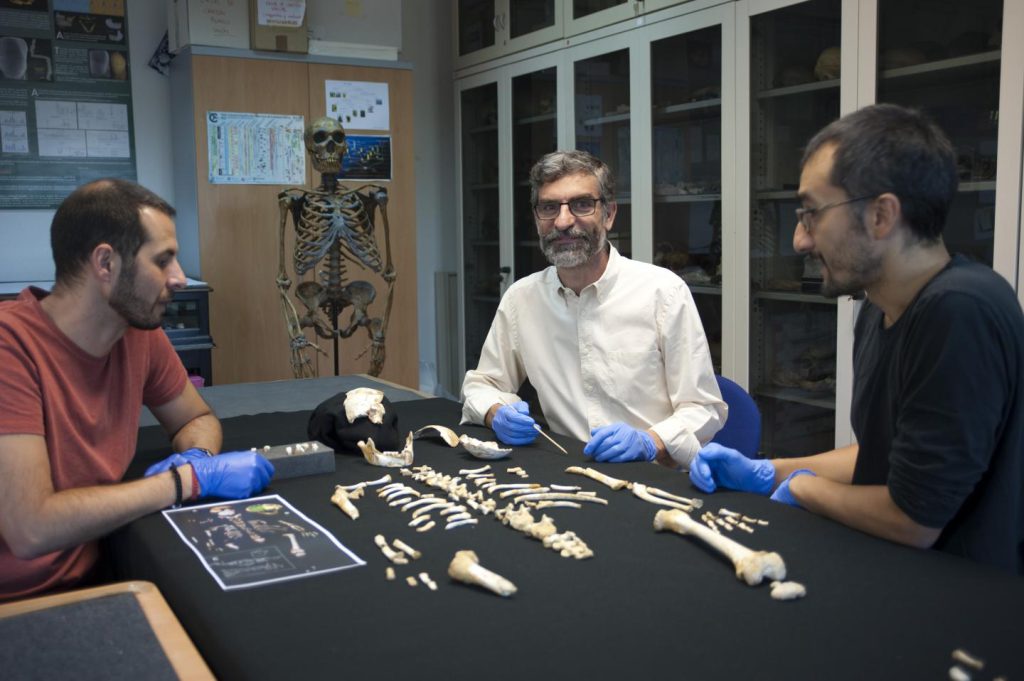The Neanderthal Brain—Clues About Cognition
Please note that this article includes images of human remains.
One of the most tantalizing topics about Neanderthals is their cognition: how it developed and whether it was much different from patterns of thought in Homo sapiens.
We know from the archaeological record that much of Neanderthal hunting, foraging, and toolmaking behavior was quite similar to that of anatomically modern humans in the same time period, some 50,000 years ago. Recent evidence for Neanderthal art also suggests that they had the potential for symbolic and abstract thinking, which had previously only been attributed to H. sapiens. These clues hint that Neanderthals may have been broadly capable of the same mental tasks as anatomically modern humans, and yet the standard view is that modern humans won the evolutionary race.
What let them win? Was there something about the Neanderthals’ cognitive capacity that didn’t measure up?
Researchers haven’t ever found any soft tissue from Neanderthals. But even in the absence of actual gray matter, researchers can still see something of the Neanderthal brain simply by looking at the skull. The brain and its bony casing grow so closely together that an imprint of the soft tissue can actually be seen on the inside of the skull. The size, shape, and texture imprinted on the surface of this empty space (together creating a real or virtual shape called an endocast), reveals something about the brain once housed inside.
Overall, Neanderthal endocasts, and thus their brains, are bigger and of a different shape than those of modern humans. The occipital (rear) portion of the Neanderthal cranium is elongated, resulting in a feature termed the “occipital bun.” Picture a ballerina with her hair tied back at the base of her skull, and you’ll get a rough idea of the shape. Researchers have wondered how that bigger size and odd shape might also affect the size and shape of different regions of the brain, thus influencing patterns of cognition.
A 2018 study used CT scans of four adult Neanderthal skulls and four anatomically modern H. sapiens skulls, and MRI scans from more than a thousand living human subjects to create endocasts of their brains. As expected, the Neanderthal brains were slightly bigger and more elongated than those of modern humans. To figure out how all of the different regions of the brain probably fit into the Neanderthal’s differently shaped space, the team used the modern human brain as a starting point and manipulated it with software to fit the proportions of Neanderthal endocasts. The study found that early H. sapiens probably had a larger cerebellum than Neanderthals—a part of the brain that, in modern humans, is important for both motor skills and higher cognition, including language processing, learning and reasoning, and social abilities. Differences in how Neanderthal and H. sapiens populations transmitted information within their social groups and passed on skills important to a hunter-gatherer lifestyle could have had a major impact on each population’s success and adaptability.
Neanderthal brain growth from infancy to adulthood is also a process researchers can understand by studying endocasts. An especially important fossil for this topic is the skeleton of a young male child who was around 8 years old when he died. The skull of this Neanderthal, unearthed at the Spanish site of El Sidrón, was still growing at the time of his death and was only around 87 percent of the full volume of the average adult male Neanderthal. In contrast, a human child of the same age would have completed almost 95 percent of their total cranial growth. Along with other similar finds of infants and children in Europe and the Levant, this suggests that, after birth, Neanderthal brains developed more slowly than those of modern humans.
Some of this slower growth rate may have its roots in the evolutionary trade-off between large brains and the limitations of the birth canal. An infant’s head can only be so large before birth becomes dangerous for both mother and newborn. Another factor limiting brain size is the high energetic cost of growing brain tissue. For these reasons, we large-brained humans, unlike other primates, are born before much of our brain has finished developing. As a result, an infant’s mother, or other members of the social group, must care for the newborn until it is able to fend for itself. Based on what researchers now know from Neanderthal endocasts, the maturation process was even more prolonged in our extinct relatives.
A final insight into the Neanderthal brain comes from the world of genetics. In an effort to understand how Neanderthal brains might have functioned, scientists at the Stem Cell Program at the University of California, San Diego (UCSD), are cultivating tiny versions of Neanderthal brains in a dish.
Approximately one-third of the human genome, or around 10,000 genes, govern neurological development. And modern humans living outside of Africa have less than 4 percent Neanderthal DNA. But one particular neurological-development gene, NOVA1, is extremely similar between humans and Neanderthals—only one pair of DNA “letters” differs between the two. That makes it an excellent target for study. Program director Alysson Muotri and colleagues use the gene-editing tool CRISPR to alter contemporary human stem cells, tweaking their NOVA1 code to match that of a Neanderthal. Then they coax the cells to become brain cells in a petri dish—a process that takes six to eight months.
The NOVA1 research is just in its beginning stages, and the tiny portions of Neanderthal brain cells currently occupying lab space at UCSD can’t yet tell us how Neanderthal brains functioned. But, along with what can be gleaned from the Neanderthal cranium, the study is an intriguing glimpse into the Neanderthal mind.
This column is part of an ongoing series about the Neanderthal body: a head-to-toe tour. See our overview page.
Correction: May 10, 2019
An earlier version of this article incorrectly stated that modern humans share approximately 20 percent of our genome with Neanderthals. The correct figure is 1–4 percent. This statement was also corrected to identify the percentage of shared genetic material with modern humans outside of Africa.


































